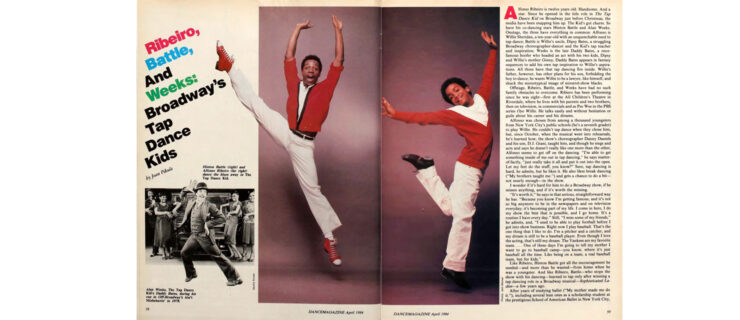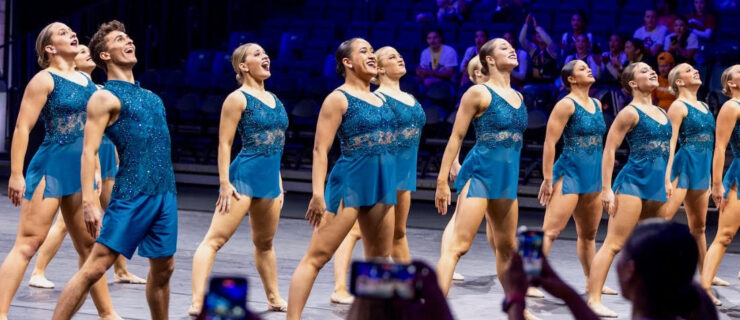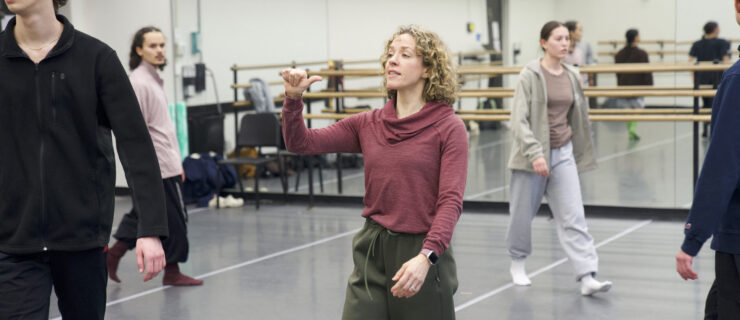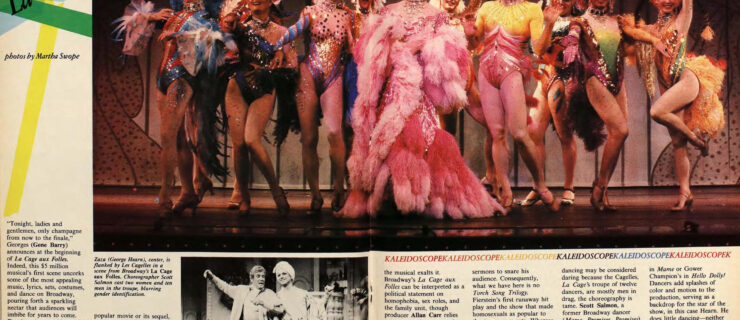Transitions
Retirements
Oregon Ballet Theatre principal Anne Mueller says farewell to the stage in Nicolo Fonte’s Left Unsaid, Trey McIntyre’s Speak, and Christopher Stowell’s Eyes on You on May 1. These ballets showcase the technical versatility, musicality, and wit Mueller has exhibited in her 15 years with OBT.
“I love those roles,” Mueller says, “but my all-time favorite is Rite of Spring.” Small wonder: In OBT artistic director Stowell’s 2009 version, he made her the central figure with choreography that amplifies her angular physicality and her talent for emotional expression. “She is incapable of dancing like anyone other than herself,” says Stowell.
McIntyre calls her dancing “all elegance and chutzpah. You get the feeling she could charm world leaders and fix a crankshaft, all with the same port de bras.”
At 36, Mueller, whose training included Washington Ballet School and Alabama School of Fine Arts, feels ready to leave the stage, but not OBT. She will continue to serve as artistic coordinator of the company, teach at the School of OBT, and nurture her budding choreographic career (she was one of the dancemakers in March’s “Stravinsky Project”).
Mueller’s talent for administration came into play in 2004 in the founding of the Trey McIntyre Project, in which she also danced. “It could only have been Anne,” McIntyre says of his former managing director, “because so few people have the guts, resourcefulness, and smarts to make something from nothing.” —Martha Ullman West
Annmaria Mazzini
is one of Paul Taylor’s fiercest dancers, eliciting gasps in Esplanade’s hurtling floor slides and airborne leaps. This fearless athleticism is balanced by her heartfelt renditions of dramatic roles, plus a delicacy and an uncommon generosity. After 12 years with Paul Taylor Dance Company, she retires this summer.
Among her favorite roles of the 60 Taylor dances in which she has appeared is The Girl in Le Sacre du Printemps (The Rehearsal). “The dance had a very palpable, mystical spirit—wonderfully creepy, and so sad. But I always felt so protected within it, like it was safe to live fully in that strange world for as long as the music played.” In PTDC’s recent New York City Center season, she reprised her powerful solo as a broken streetwalker in Black Tuesday, which Taylor created for her, and received a shower of bouquets for it.
Mazzini, 38, began dancing at 12 in Allentown, PA, with an eye toward musical theater. She attended Meadows School of the Arts at Southern Methodist University, where she became interested in Taylor’s choreography. She began studying at the Taylor school the summer before her senior year; she joined Taylor 2 in 1995 and the main company in 1999. With her disarming smile and unbounded energy, she quickly became a crowd favorite—no small task in Taylor’s long line of outstanding dancers.
In addition to her dancing career, Mazzini has been creating her own line of jewelry since 2006, which she will expand after leaving the company. She has osteoarthritis in her hip, requiring surgery, which will hopefully free her of the pain she has endured. “Dance will continue to be a big part of my identity as an artist, but I am redefining what that means to me,” she says. “I’m looking forward to spending a lot of time at home too—being away from my cats was the only thing I didn’t like about touring.” While her cats will benefit, audiences will miss her luminous presence onstage. —Susan Yung
Death
Jerry Ames (1930–2011)
A tap dancer known for his graceful style who founded his own company in the 1970s, Jerry Ames died in February. The lifelong New Yorker studied with noted tapper Paul Draper and came to prominence as a featured player in “Tap Happening” (later “Tap Happening: The Hoofers”) in 1969. The recurring jam session showcased the most celebrated hoofers of the day, including Rhythm Red, Jimmy Slyde, and Chuck Green (Ames was the only white dancer), and helped tap dance to regain its footing as a popular dance form. He founded the Jerry Ames Dance Company in 1976, with the aim of performing a variety of rhythmic styles. According to Constance Vallis-Hill’s Tap Dancing America: A Cultural History, Ames said at the company’s debut performance, “We’re trying to show that tap is not limited. We do a waltz duet, an American Irish jig, jazz, and ‘mood espagnole.’ ” Ames co-wrote The Book of Tap: Recovering America’s Long Lost Dance (1977) and appeared in the documentary (1980). He received a Flo-Bert Award for outstanding achievement in tap in 2006. —Kina Poon
Anne Mueller, with Brian Simcoe, in Stowell’s
Tolstoy’s Waltz. Photo by Blaine Truitt Covert, Courtesy OBT




